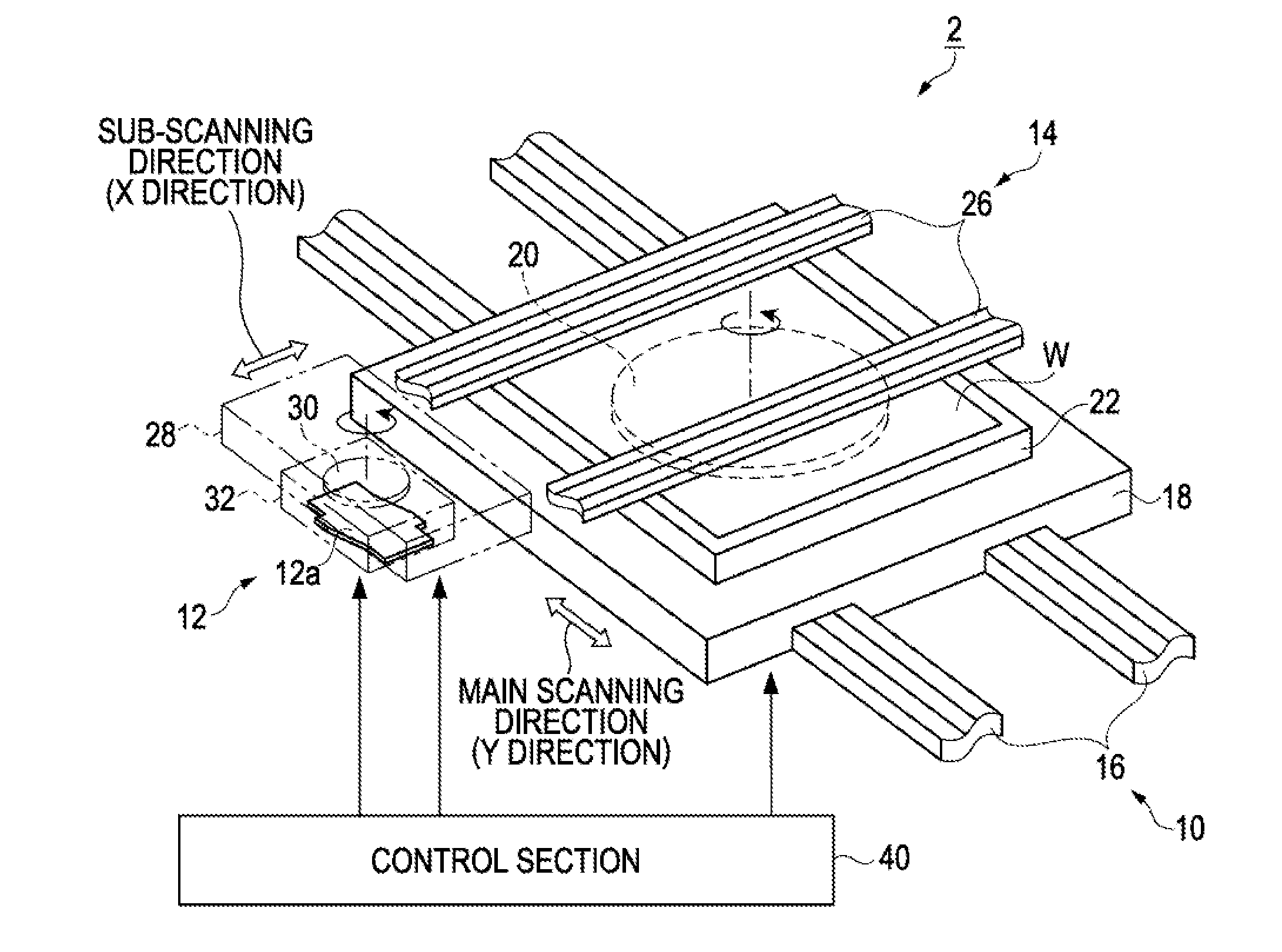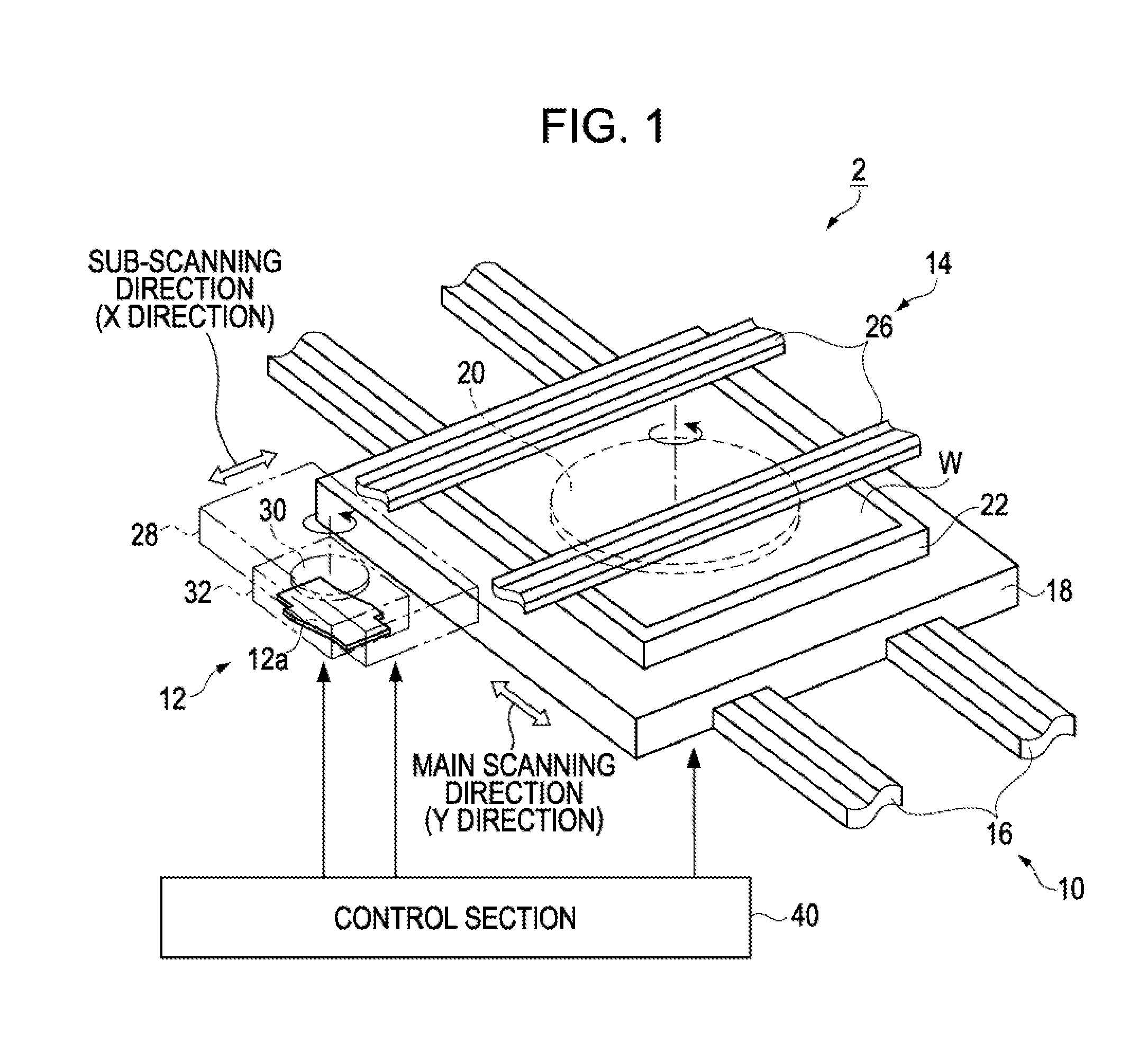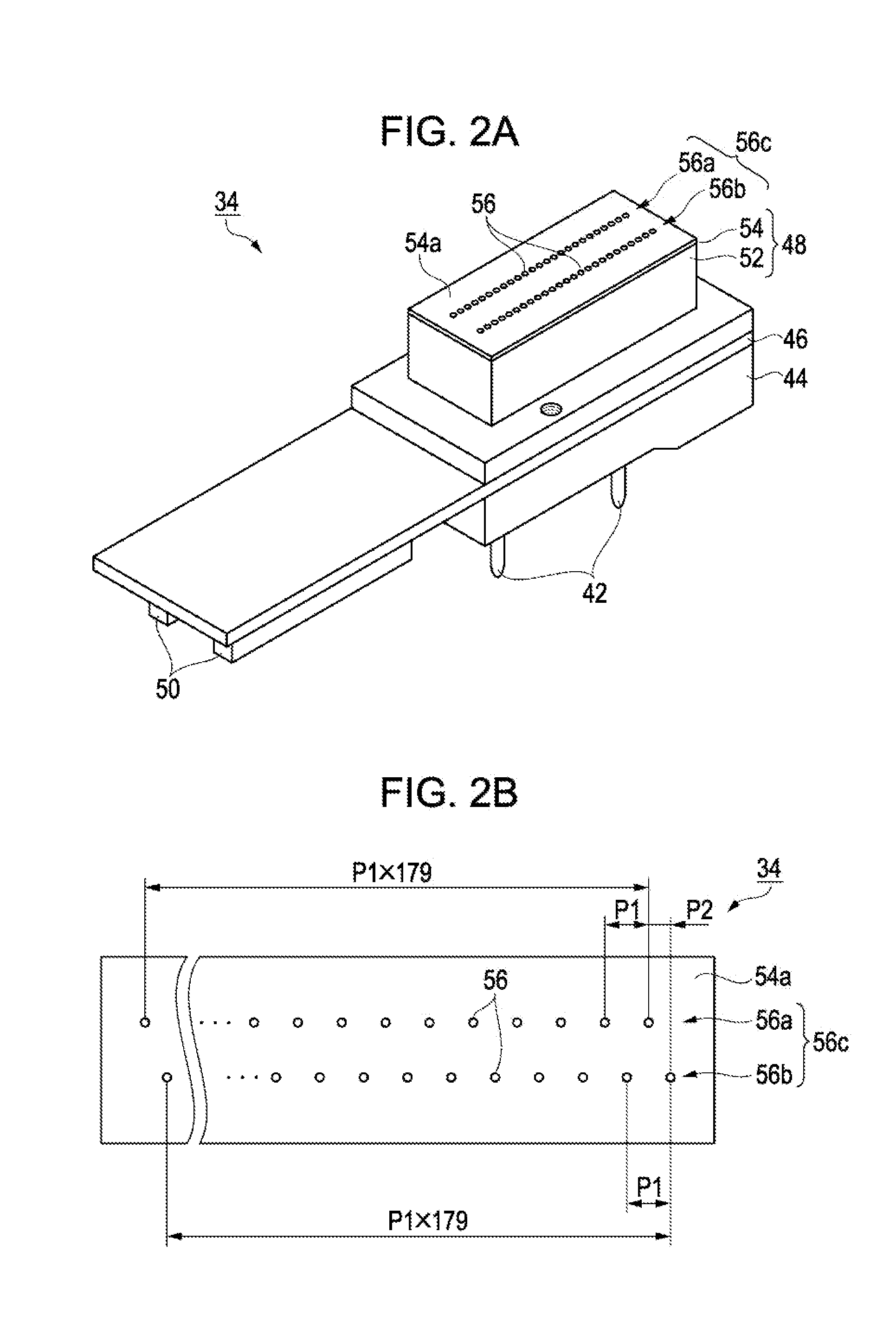Function layer ink, method for manufacturing light-emitting element, light-emitting device, and electronic apparatus
- Summary
- Abstract
- Description
- Claims
- Application Information
AI Technical Summary
Benefits of technology
Problems solved by technology
Method used
Image
Examples
first embodiment
Droplet Ejection Apparatus
[0042]An ejection apparatus that can eject droplets of a liquid containing a function layer material onto an ejection target will first be described with reference to FIGS. 1 to 4.
[0043]FIG. 1 is a schematic perspective view of an election apparatus according to an embodiment. As shown in FIG. 1, the election apparatus 2 of the embodiment includes a work transport mechanism 10 that transports a planar work W, which is an ejection target, in a first direction, or a main scanning direction (Y direction), of the work W, and a head transport mechanism 14 that transports a head unit 12 in a second direction, or a sub scanning direction (X direction), perpendicular to the main scanning direction.
[0044]The work transport mechanism 10 includes a pair of guide rails 16, a movable platen 18 that moves along the pair of guide rails 16, and a stage 22 disposed on the movable platen 18. A work W is placed on the stage with a rotation mechanism 20 therebetween.
[0045]The ...
example 1
[0151]First, hole injection layers were formed by an ink jet method to a thickness of 50 to 60 nm on a substrate provided with anode layers thereon. After being vacuum dried, the coating was fired by heating at 150° C. The hole injection layer material was PEDOT / PSS (1 / 20) that had been prepared by dispersing poly(3,4-ethylenedioxythlophene), which is a polythiophene derivative, in a disperse medium polystyrene sulfonic acid to prepare a dispersion, and further dispersing the dispersion in water. At this time, in order to perform stable ejection, a solvent having a high boiling point was added to the macromolecular PEDOT / PSS. Examples of the solvent having a high boiling point include aromatic hydrocarbons, isopropyl alcohol (IPA), n-butanol, γ-butyrolactone, N-methylpyrrolidone (NMP), dimethylformamide (DMF), hexamethylphosphoramide (HMPA), dimethyl sulfoxide (DMSO), 1,3-dimethyl-2-imidazolidinone (DMI) and its derivatives, and glycol ethers such as Carbitol acetate and butyl Carbi...
example 2
[0154]Luminescent layers were formed using solutions each containing 1.5% by weight of any of the same red, green and blue low-molecular-weight luminescent materials as in Example 1 in a mixed solvent (aqueous solvent A+aqueous solvent B, shown in the table of FIG. 10C). Other steps in the process for manufacturing the organic EL elements of Example 2 were the same as in Example 1.
PUM
| Property | Measurement | Unit |
|---|---|---|
| Temperature | aaaaa | aaaaa |
| Percent by mass | aaaaa | aaaaa |
| Dynamic viscosity | aaaaa | aaaaa |
Abstract
Description
Claims
Application Information
 Login to View More
Login to View More - R&D
- Intellectual Property
- Life Sciences
- Materials
- Tech Scout
- Unparalleled Data Quality
- Higher Quality Content
- 60% Fewer Hallucinations
Browse by: Latest US Patents, China's latest patents, Technical Efficacy Thesaurus, Application Domain, Technology Topic, Popular Technical Reports.
© 2025 PatSnap. All rights reserved.Legal|Privacy policy|Modern Slavery Act Transparency Statement|Sitemap|About US| Contact US: help@patsnap.com



